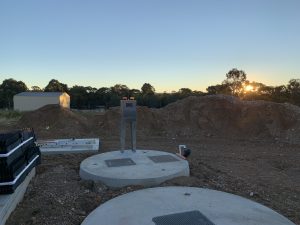What is the Best Wastewater Treatment System?
The Best Wastewater Treatment System
Wastewater treatment is an important process that helps to purify water so that it can be reused or returned to the environment. There are many different wastewater treatment systems available, and choosing the best one depends on various factors such as the type and volume of wastewater being treated, the resources and space available, and the desired level of purification. In this article, we will discuss some of the most effective wastewater treatment systems currently available.
Activated Sludge Process
The activated sludge process is a widely used method of biological wastewater treatment. It involves the use of microorganisms to break down organic matter in wastewater. The microorganisms are suspended in a mixture of wastewater and air, known as “activated sludge,” which is then agitated to increase the rate of metabolism. The mixture is then settled to separate the microorganisms, or sludge, from the treated water. The sludge is typically returned to the beginning of the process to be reused, while the treated water is further purified through processes such as filtration and disinfection.
Anaerobic Digestion
Anaerobic digestion is another biological wastewater treatment process that uses microorganisms to break down organic matter. Unlike the activated sludge process, anaerobic digestion takes place in the absence of oxygen. This process occurs in specialised tanks called anaerobic digesters, which are filled with wastewater and a mixture of microorganisms. The microorganisms break down the organic matter, producing biogas (a mixture of methane and carbon dioxide) as a byproduct. The biogas can be captured and used as a renewable energy source, while the remaining sludge can be used as a fertiliser. Anaerobic digestion is a highly efficient method of wastewater treatment and is particularly effective at reducing the amount of organic matter and nutrients in the water.
Constructed Wetlands
Constructed wetlands are artificial wetlands that are designed to purify wastewater using natural processes. They can be used to treat both municipal and industrial wastewater, and are particularly effective at removing nutrients and heavy metals. Constructed wetlands consist of a series of basins or cells filled with plants, sand, and gravel. As the wastewater flows through the cells, the plants and microorganisms in the soil absorb and break down pollutants. The purified water is then collected and can be reused or released back into the environment. Constructed wetlands are a low-energy and low-maintenance option for wastewater treatment, and they also provide habitat for a variety of wildlife.
Reverse Osmosis
Reverse osmosis is a physical treatment process that uses pressure to force wastewater through a membrane, which removes impurities and contaminants. It is a highly effective method of purification and is commonly used to treat seawater, as well as industrial and municipal wastewater. Reverse osmosis is particularly useful for removing dissolved salts and other inorganic substances from water. However, it can be energy-intensive and may require the use of chemicals to aid in the purification process.
Conclusion
There are many different wastewater treatment systems available, and the best one for a particular application will depend on various factors such as the type and volume of wastewater, the resources and space available.
Eco-Septic is a Sydney based manufacturer and specialises in commercial wastewater systems of various shapes and designs. We can provide fast and free quotes relevant to your commercial wastewater needs, all while keeping in mind individual spending capabilities
Feel free to contact us on 1800 808 135 to discuss tank/system type, sizing and pricing or visit us at www.ecoseptic for me information.
We cover all Sydney suburbs as well as the regions of South Coast, Snowy Mountains, Southern Highlands, Riverina, Blue Mountains and Hawkesbury, Laguna, North and Mid North Coast, Bateman’s Bay, Nowra, Mallacoota, Narooma, Balmoral, Cobargo, Glenn Ines, Avondale, Glenmore, Mogo, Tarago, Torrumbarry, Albury, Faulconbridge, Maraylya, Sherbrooke, Strathdickie, Little Hartley, Linden, cattail,
Bowen Mountain, Murwillumbah, Kyogle, Bryon Bay, Lismore, Evan Heads, Yamba, Grafton and surrounding areas.
Related Posts
- Why should effluents be treated before discharge?
- Are Septic Tanks Better For The Environment Than Sewer Systems?
- What is a residential greywater system?
- Navigating Wastewater Solutions: A Guide to the Application Process Through NSW Councils
- How Does AWTS (Aerated Water Treatment System) Work?
- Sustainable Septic Systems: Embracing Indigenous Wisdom for Modern Living
- How to conduct regular maintenance on your septic tank system
- Revitalize Your AWTS for the New Year: A Comprehensive Guide to Yearly Servicing





